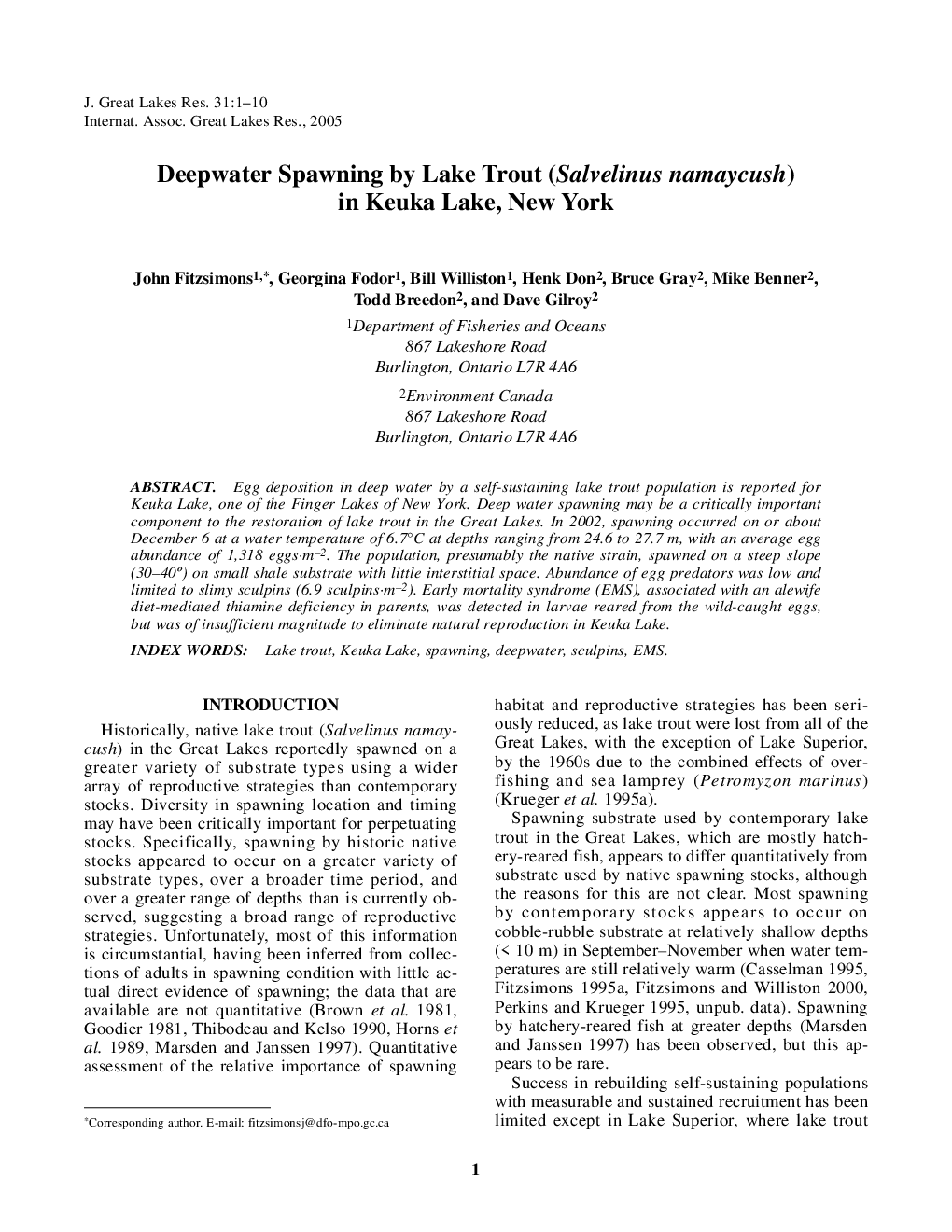| Article ID | Journal | Published Year | Pages | File Type |
|---|---|---|---|---|
| 9450203 | Journal of Great Lakes Research | 2005 | 10 Pages |
Abstract
Egg deposition in deep water by a self-sustaining lake trout population is reported for Keuka Lake, one of the Finger Lakes of New York. Deep water spawning may be a critically important component to the restoration of lake trout in the Great Lakes. In 2002, spawning occurred on or about December 6 at a water temperature of 6.7°C at depths ranging from 24.6 to 27.7 m, with an average egg abundance of 1,318 eggs·mâ2. The population, presumably the native strain, spawned on a steep slope (30-40°) on small shale substrate with little interstitial space. Abundance of egg predators was low and limited to slimy sculpins (6.9 sculpins·mâ2). Early mortality syndrome (EMS), associated with an alewife diet-mediated thiamine deficiency in parents, was detected in larvae reared from the wild-caught eggs, but was of insufficient magnitude to eliminate natural reproduction in Keuka Lake.
Related Topics
Physical Sciences and Engineering
Earth and Planetary Sciences
Earth and Planetary Sciences (General)
Authors
John Fitzsimons, Georgina Fodor, Bill Williston, Henk Don, Bruce Gray, Mike Benner, Todd Breedon, Dave Gilroy,
